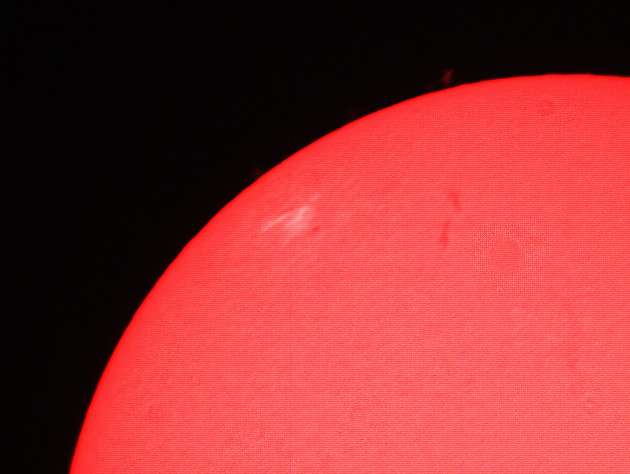One of the adjustments on my solar scope (Coronado Solar Max 2, double stack) effects the “tuning” of the scope. Truth is, that is the primary thing that can be adjusted, other than the focus. The object of tuning the scope is to allow the user to obtain more contrast on objects, eg sunspots. The tuning appears to be rather sharp. I often see the effect as the brightness spread across the face of the sun. Today, I took several images of the sun. However, a major difference today is the sun is too low to ride piggyback on the LX200GPS, so it is used as a stationary scope. Of course, that means that the sun drifts across the field of view of the scope. With no tracking (of the sun), stacking becomes more difficult and, generally, the images suffers from “motion blur”to some extent. With that in mind, what I want to show, is the effect of changing the tuning on the scope. As there is no method of measuring the difference in tuning, the best I can do is just show the effect. So, image 1 is with the tuning one way; image 2, another. Note the increased detail, however, in image 2. One of the main things the tuning does is change the center frequency of the light coming through the scope. Elements with doppler shift can disappear if tuned out of the bandpass of the scope. That's basically the effect seen in image 1. The bandpass was changed to favor the right hand side of the image, so elements barely visible in image 1 are now more easily visible in the 2nd image.

Image 1. Note the white, hotter, area around the sunspots and prominence about 5 0'clock.
 |
| Image 2. Much more to be seen. |













